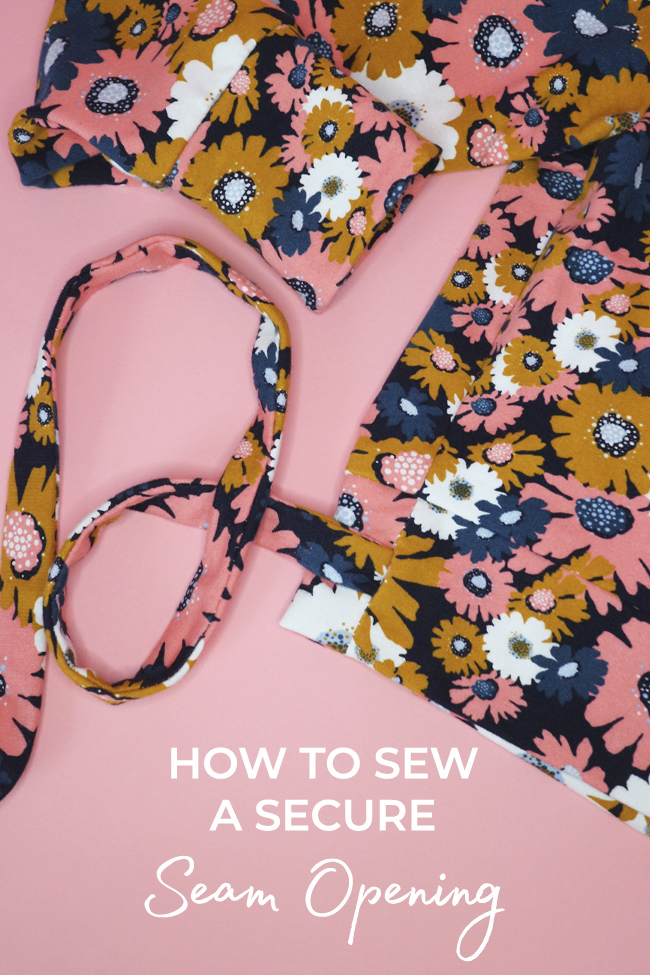
You probably know how to sew a seam without leaving any holes... But what if you do want to leave a hole - a hole with a purpose?
If you're making a wrap-style garment, such as the Pearl cardigan sewing pattern, you'll need to leave an opening in the side of the hem band for the tie to go through. I'm going to show you how to do this in a way that makes the opening both strong and tidy.
You can use this method on other projects too where there is a facing or double layer of fabric around a seam opening. It's a very similar set of steps if you want to create thumbholes in your cuffs, for example.


It's one of those techniques that may cause a bit of head-scratching the first time you do it, but just keep in mind what we're trying to achieve, which is to join together the seam allowances that go around the opening, on the inside, so they're not left loose. We've made you a video which we hope will make understanding the process easier...
On the Pearl cardigan, we're starting at the point where we join the hem bands together - in the instruction booklet, this comes after turning the waist ties right sides out.
Lay the front hem bands over the back hem band, right sides together. Pin them together along the quadruple-notched side seams, matching notches. On the left-hand side (not shown), narrow zigzag stitch or overlock (serge) all the way along this seam.
On the right-hand side, we need to leave two openings - using a narrow zigzag stitch on your regular sewing machine, sew from one end to the first notch and back tack securely. Start sewing again from the second notch to the third notch, back tacking securely at each end. Sew from the fourth notch to the end, back tacking securely.

On the left-hand side sem, trim the seam allowance if you used a regular sewing machine; press them open or towards the back (not shown). On the right-hand side seam, don't trim the seam allowances; press them open, including the unstitched parts.

Fold the hem band in half lengthways at the right-hand side seam, wrong sides together, bringing the openings in the seam on top of each other. We're going to stitch together the seam allowances on either side of the hole from the inside to create a neat finish and to strengthen the opening, as it is going to have a lot of use.
Hold the seam allowances on one side of the opening so they're together inside the hem band.

Reach inside the hem band with your other hand and pinch these seam allowances (that you're holding) together from the inside between a finger and thumb.
Carefully pull the pinched seam allowances through the hem opening so they’re wrong sides out. Pin the seam allowances together, pulling the rest of the fabric out of the way.
Stitch these seam allowance layers together across the hole with a 12mm (1/2in) seam allowance, being careful not to catch any other layers in the stitching.

Turn the hem band right side out again, and repeat the above step with the seam allowances on the other side of the opening.

To make the opening extra secure, you can use a wide and short zigzag (5mm wide by 0.7-1mm long) to topstitch a small bartack at each end of the hole.
Tada! You've sewn your super-secure seam opening.

If you liked this post check out How to Lengthen or Shorten a Sewing Pattern and How to do a Full Bust Adjustment for Knit Fabrics!
*****
Step Photography: Jane Looker

